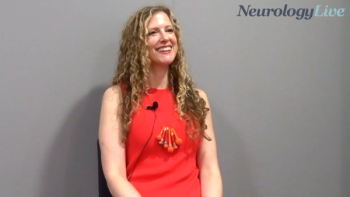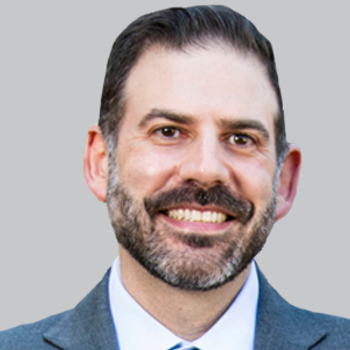
- October 2023
- Volume 6
- Issue 5
Equity in the Media and Academia
There should be a holistic approach to how the systems in place affect equity: how medicine is practiced and research is conducted, the structure of academic institutions, and how media influence our perceptions of neurologic conditions.
WHEN WE THINK ABOUT EQUITY in the field of neurology, we need to take a holistic approach and look at how the systems we have in place affect equity: how we practice medicine, the structure and priorities of our academic institutions, the way research is conducted, the degree of visibility given to disabling conditions, and how media influence our perceptions of neurologic conditions.
Representation in the Media
Just look through this year’s news headlines, from “Céline Dion was Diagnosed With Stiff-Person Syndrome” to “First Alzheimer’s Drug to Slow Disease, Leqembi, Gets Full FDA Approval.”1,2 These stories in the media often capture only a limited view of a disease or sensationalize a drug discovery. What is missing are stories that include diverse patient populations and highlight common neurologic conditions. The kind of medical care practicing neurologists provide is not making the headlines. This becomes problematic as patients expect miracle drugs or perceive neurology as inaccessible, especially if they see only celebrities who do not look like them in the news. Although it may be difficult for patients to relate to celebrities, emphasizing the burden of common neurologic conditions and advancements in treatment through media can benefit patients and their perceptions about their neurologic conditions.
Celebrity diagnoses can directly influence public health behavior.3 For example, when Angelina Jolie disclosed that she was a BRCA1 mutation carrier and underwent a risk-reducing mastectomy, genetic testing and mastectomy rates went up for several years thereafter.4 Instead of preventive action steps or treatment, the stories in neurology tend to focus on “what is the diagnosis?” After Mitch McConnell, the US Senate majority leader, twice froze in front of reporters, speculations included seizures, transient ischemic attacks, Parkinson disease, and what the congressional physician now terms symptoms of dehydration.5 Additionally, many of the celebrities we see in the media and through advertisements for certain drugs tend to be White, which is not representative of our patient populations. Examples include Bruce Willis with frontotemporal dementia, Justin Bieber with Ramsay Hunt syndrome, Bob Saget with traumatic brain injuries, and Michael J. Fox with Parkinson disease, just to name a few.
In addition to lack of representation of diverse patient populations in the media, there is decreased visibility of more common neurologic diseases, such as stroke and migraine. More recent efforts to increase representation can be seen through advertisements for the migraine medications rimegepant (Nurtec ODT; Pfizer) and ubrogepant (Ubrelvy; AbbVie), featuring Serena Williams and Khloé Kardashian, respectively. The number of times a patient presents for an initial visit and references the drug in “that commercial with Serena Williams” is telling of how media and celebrity can raise awareness of often underrecognized and undertreated neurologic diseases like migraine.
In the Global Burden of Disease Study 2017, it was determined that in the United States, the 3 most burdensome neurological diseases were migraine, Alzheimer disease and other dementias, and stroke.6 Data were collected across all US states on incidence, prevalence, and disability-adjusted life-years and deaths by cause of all major neurological disorders. Despite migraine and stroke also forming the top 3 in neurologic disorder burden, stories on Alzheimer disease continue to dominate the mainstream press. Research funding across neurology subspecialties varies significantly, and this disparity is compounded in the media that cover research and drug discoveries, predominantly in dementias.
Disparities in Headache Medicine and Beyond
Despite migraine being the second most disabling neurologic condition worldwide, migraine and headache research receives only a fraction of National Institutes of Health funding—much less than funding for diseases with comparable patient populations and burden, such as digestive disorders and breast cancer.7 Additionally, there is a false notion that headache is predominantly a disease of White women and high-income countries; migraine research reflects this perception, as participants in studies are usually White, wealthy women. However, research looking at insurance and socioeconomic status reveals that there is a 60% higher rate of migraine in those making less than $10,000 per year compared with those making over $30,000 per year. Additionally, patients who are uninsured or considered low income are less likely to receive acute migraine treatments.8
Further disparities are seen across race and ethnicity and although the data are sparse, American Indian and Alaska Native populations have the highest prevalence of migraine and severe headache in the United States, at 19.2%.9 Although White patients, Black patients, and Hispanic patients have roughly the same prevalence at around 15%, African American patients and Hispanic patients are less likely (25% and 50%, respectively) to receive a diagnosis of migraine than White patients. The heavy burden of headache disorders should provide an impetus to allocate more funds for research to develop effective interventions and provide resources for underserved communities to deliver equitable care.
Similar disparities can be seen across all neurological disorders.10 Black patients are 30% less likely to see an outpatient neurologist than White patients even when factoring in insurance, demographics, and health status differences. Hispanic patients are 40% less likely than White patients to see an outpatient neurologist. Access to neurologists is one of the barriers to providing equitable care, as it is estimated that by 2025 there will be a need for 21,440 neurologists across the nation but that we will fall 19% short of this goal.11 Furthermore, 41 states will not be able to keep up with patient access, and 88% of these states will fall short by 20%.
Are We Practicing What We Preach in Academia?
In academia, one of the ways to serve underserved populations is through the creation of resident continuity clinics. Although the intention when developing these clinics is to provide care to underserved communities, operation of these clinics can perpetuate further disparities. Kavita Vinekar, MD, MPH, who at the time was with the David Geffen School of Medicine at the University of California, Los Angeles, discussed the potentially problematic structure of resident continuity clinics.12 She wrote about how as a resident she came to a “fork in the hallway” where to the right, residents would see patients with Medicaid, and to the left, attendings would see privately insured patients. She added, “I watched as Black patients turned right and White patients turned left.” Her observations are reflective of segregation created within academic medical practices.
The majority of resident continuity clinics are located in underserved communities, particularly made up of underinsured and uninsured patients.13,14 Typically, academic resident continuity clinics endure additional challenges such as poor continuity affected by residents’ inconsistent schedules, inadequate resources, and longer wait times as residents need to staff patients with attendings.15 There is a struggle between ensuring that residents are receiving a well-rounded education while ensuring our training programs are not exacerbating the health inequities that our patients face.
Where Do We Go From Here?
To create a more equitable academic environment and represent neurologic conditions and our patients equitably in the media, systemic changes need to be made. From a clinical standpoint, there is evidence that increasing the racial and ethnic diversity of our physician workforce benefits patients from underserved communities.16 Academic centers should aim to recruit more faculty members from underrepresented groups and provide incentives to help retain faculty. This will also affect efforts to improve representation in research studies. On the administrative side, hospitals with more racially and ethnically diverse individuals in executive and board member roles are shown to have a larger emphasis on diversity initiatives, highlighting the importance of leadership that espouses equity.17
On a national level, there is a need for research funding for underrecognized neurologic disorders such as migraine. The stories in the media should also be reflective of the neurology we practice and the wide spectrum of patients we serve. Media can be a powerful tool for neurologists to provide patient education to a mass audience.18 As such, media training for neurologists should also include patient advocacy, which entails explaining limitations of what we know, correcting statements that do not paint the full picture, and pushing for diversification in news coverage of patients and neurologic disease.
Efforts to raise awareness and increase visibility of the most burdensome neurologic conditions and underserved patient populations will help us move toward equity in academia, research, and media—all important avenues for bettering health care.
REFERENCES
1. Olson E. Celine Dion was diagnosed with stiff-person syndrome. Here’s how it affects people. NPR. December 8, 2022. Accessed September 12, 2023. https://www.npr.org/2022/12/08/1141538144/celine-dion-stiff-person-syndrome-canceled-showss
2. Moniuszko S. First Alzheimer’s drug to slow disease, Leqembi, gets full FDA approval. CBS News. July 7, 2023. Accessed September 12, 2023. https://www.cbsnews.com/news/first-alzheimers-drug-slow-disease-leqembi-gets-full-fda-approval/
3. Rosenthal AN. Media must report celebrity health stories responsibly. BMJ. 2017;356:j192 doi:10.1136/bmj.j192
4. Liede A, Cai M, Crouter TF, Niepel D, Callaghan F, Evans DG. Risk-reducing mastectomy rates in the US: a closer examination of the Angelina Jolie effect. Breast Cancer Res Treat. 2018;171(2):435-442. doi:10.1007/s10549-018-4824-9
5. Pengelly M. Mitch McConnell rejects speculation about future amid concerns over health. The Guardian. September 6, 2023. Accessed September 12, 2023. https://www.theguardian.com/us-news/2023/sep/06/rand-paul-comments-mitch-mcconnell-freeze-republicans
6. GBD 2017 US Neurological Disorders Collaborators; Feigin VL, Vos T, Alahdab F, et al. Burden of neurological disorders across the US from 1990-2017: a Global Burden of Disease Study. JAMA Neurol. 2021;78(2):165-176. doi:10.1001/jamaneurol.2020.4152
7. Gillum LA, Gouveia C, Dorsey ER, et al. NIH disease funding levels and burden of disease. PLoS One. 2011;6(2):e16837. doi:10.1371/journal.pone.0016837
8. Stewart WF, Lipton RB, Celentano DD, Reed ML. Prevalence of migraine headache in the United States.Relation to age, income, race, and other sociodemographic factors. JAMA.1992;267(1):64-69.
9. Burch R, Rizzoli P, Loder E. The prevalence and impact of migraine and severe headache in the United States: figures and trends from government health studies. Headache. 2018;58(4):496-505.doi:10.1111/head.13281
10. Saadi A, Himmelstein DU, Woolhandler S, Mejia NI. Racial disparities in neurologic health care access and utilization in the United States. Neurology. 2017;88(24):2268-2275. doi:10.1212/WNL.0000000000004025
11. Dall TM, Storm MV, Chakrabarti R, et al. Supply and demand analysis of the current and future US neurology workforce. Neurology. 2013;81(5):470-478.doi:10.1212/WNL.0b013e318294b1cf
12. Vinekar K. Pathology of racism- acall to desegregate teaching hospitals. N Eng J Med. 2021;385(13):e40. doi:10.1056/NEJMpv2113508
13. O’Neil EH, Shugars DA, Bader JD. Health professions education for the future: schools in service to the nation: report. Pew Health Professions Commission, UCSF Center for the Health Professions; 1993.
14. Allen S. Commentary: academic hospitals have an obligation to heal communities. Modern Healthcare. May 25, 2019. Accessed September 12, 2023. https://www.modernhealthcare.com/opinion-editorial/commentary-academic-hospitals-have-obligation-heal-communities
15. Nadkarni M, Reddy S, Bates CK, Fosburgh B, Babbott S, Holmboe E. Ambulatory-based education in internal medicine: current organization and implications for transformation.Results of a national survey of resident continuity clinic directors. J Gen Intern Med. 2011;26(1):16-20. doi:10.1007/s11606-010-1437-3
16. Shen MJ, Peterson EB, Costas-Muñiz R, et al. The effects of race and racial concordance on patient-physician communication: asystematic review of the literature. J Racial Ethn Health Disparities. 2018;5(1):117-140.
doi:10.1007/s40615-017-0350-4
17. Herrin J, Harris KG, Spatz E, Cobbs-Lomax D, Allen S, León T. Hospital leadership diversity and strategies to advance health equity. Jt Comm J Qual Patient Saf. 2018;44(9):545-551. doi:10.1016/j.jcjq.2018.03.008
18. Scopelliti M, Pacilli MG, Aquino A. TV news and COVID-19: media influence on healthy behavior in public spaces. Int J Environ Res Public Health. 2021;18(4):1879. doi:10.3390/ijerph18041879
Articles in this issue
almost 2 years ago
AI-Powered Patient Advocacy: Amplifying Health Care Voicesalmost 2 years ago
AI in Academic Neurology: A Chat With ChatGPT-4almost 2 years ago
Thyroid-Stimulating Hormone Receptor in Duchenne Muscular Dystrophyalmost 2 years ago
Understanding Optimal Time to Initiate Anticoagulation: The START Trialalmost 2 years ago
Updates in the Management of Excessive Daytime Sleepiness and Narcolepsyalmost 2 years ago
Beyond the Pain: Considering Migraine in Family PlanningNewsletter
Keep your finger on the pulse of neurology—subscribe to NeurologyLive for expert interviews, new data, and breakthrough treatment updates.








































